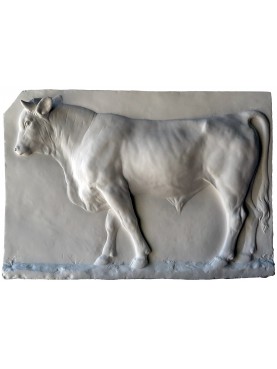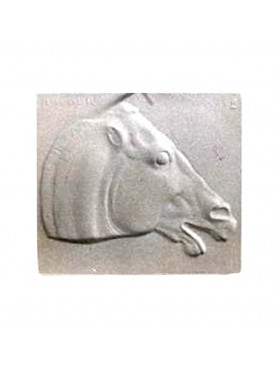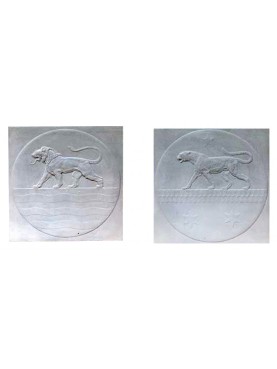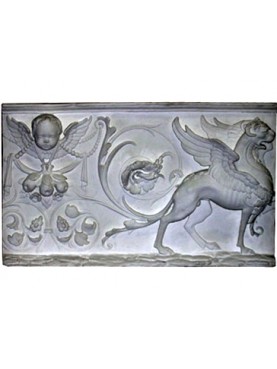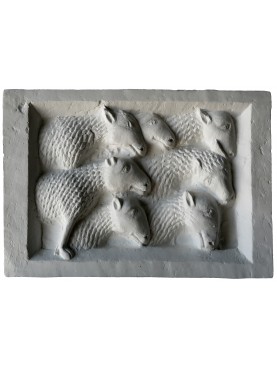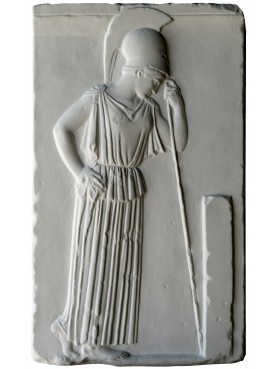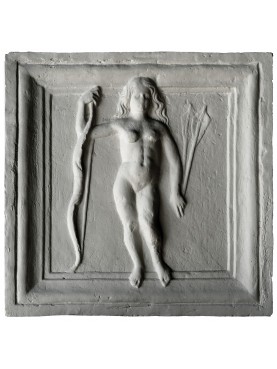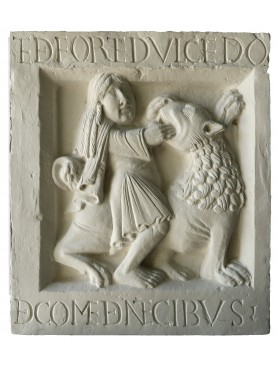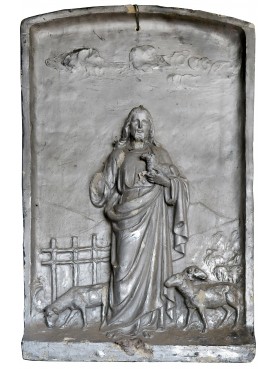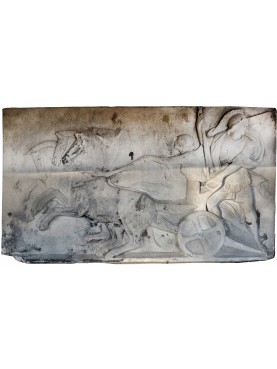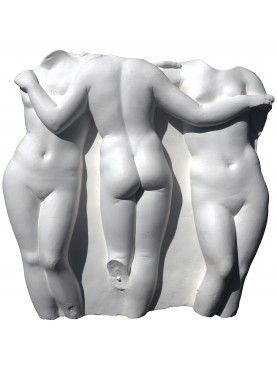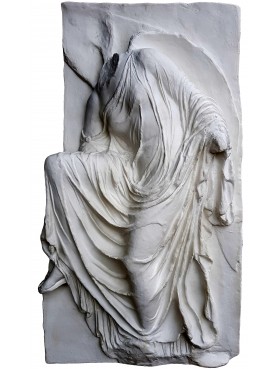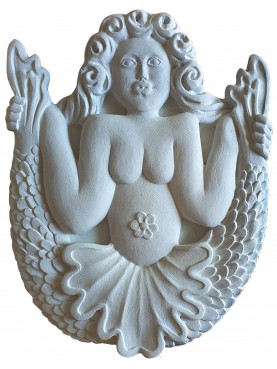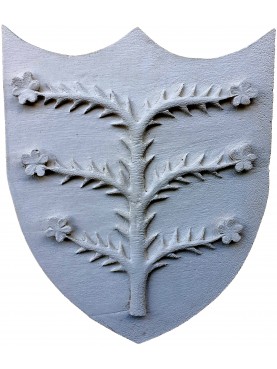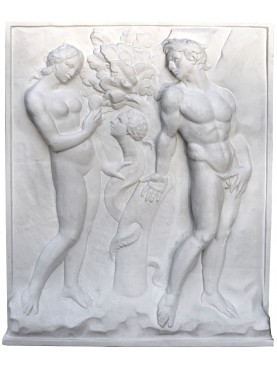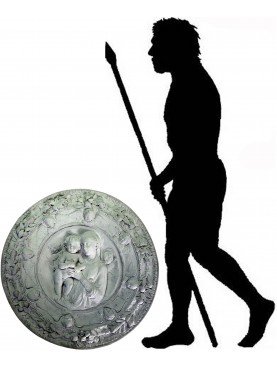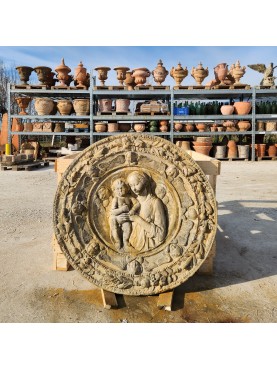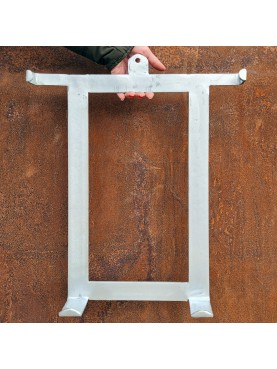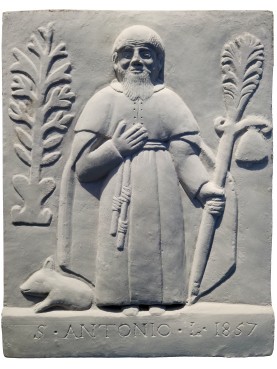Metope of the Parthenon of Athens in plaster - East Frieze Block 8
Metope of the Parthenon of Athens in plaster - East Frieze Block 8
7404
New
Bas-relief in patinated plaster; also available in unpatinated white plaster.
1:1 reproduction of the metope of the Parthenon in Athens, North Frieze, Block 38.
On block VIII a bearded rider tries to restrain his spirited horse by decisively pulling the reins which were once rendered in bronze. In order to keep his balance, the horseman braces his right foot firmly against a rock whereas the resistance of the horse is shown by his swelling veins. The horseman wears an exomis, and above it a chlamys that flaps out behind him in deep folds. The cap on his head is of fox skin (alopeke), while on his feet he wears boots, their fold-over tops also originally made of added bronze. The rider is usually identified with one of the two Hipparchoi, the commanders of the Athenian cavalry. Others say he may be a Thracian ally of the Athenians, since his attire is characteristically Thracian. Those who attribute a mythological interpretation to the frieze consider the horseman to be the mythical king of Athens, Theseus, who united the scattered settlements of Attica and founded the celebration of the Panathenaia.
Upon request, this bas-relief can be produced in white Carrara marble.
Data sheet
| Height | 39.76 in | 101 cm |
| Width | 55.51 in | 141 cm |
| Thickness | 5.91 in | 15 cm |
| Weight | 0 lbs | about 30 Kg |
| Material | chalk - plaster cast | |
| Museum where the Original is exhibited | Museo dell'Acropoli - Atene/Athens | |
| Note 01 | 1:1 reproduction like the original |
More info
The Metopes of the Parthenon are a series of marble panels, originally 92 in number, on the outside walls of the Parthenon in Athens, Greece, forming part of the Doric frieze. The metopes of each side of the building (14 each on the eastern and western walls, 32 each on the northern and southern walls) had a different subject, and together with the pediments, Ionic frieze, and the statue of Athena Parthenos contained within the Parthenon, formed an elaborate program of sculptural decoration. Fifteen of the metopes from the south wall were removed and are now part of the Parthenon Marbles in the British Museum, and others have been destroyed. They are famous examples of the Classical Greek high-relief.
Eastern metopes - East Frieze
The fourteen eastern metopes were located at the main entrance. They represented the final stages of the cosmogonic battle between the Olympians and the Giants (Gigantomachy). The fight develops around the central figure of Zeus (panel nº 8), followed by his chariot driven by Hera (panel nº 7). His brother Poseidon with his chariot is shown nearby (panel nº 6) traveling along the island of Nisyros passing over the defeated giant Polybotes. Although the figure of Hercules has not yet been identified from the remaining fragments, it is almost certain that the hero, whose contribution to the victory of the Olympian gods was significant, was present in the metopes. The happy outcome of the battle is described in the scene of Helios (god of the sun) and his chariot passing in the night (panel nº 14), a new era was about to begin. The eastern metopes are in very poor condition, and the identification of most of the figures is uncertain at best.















